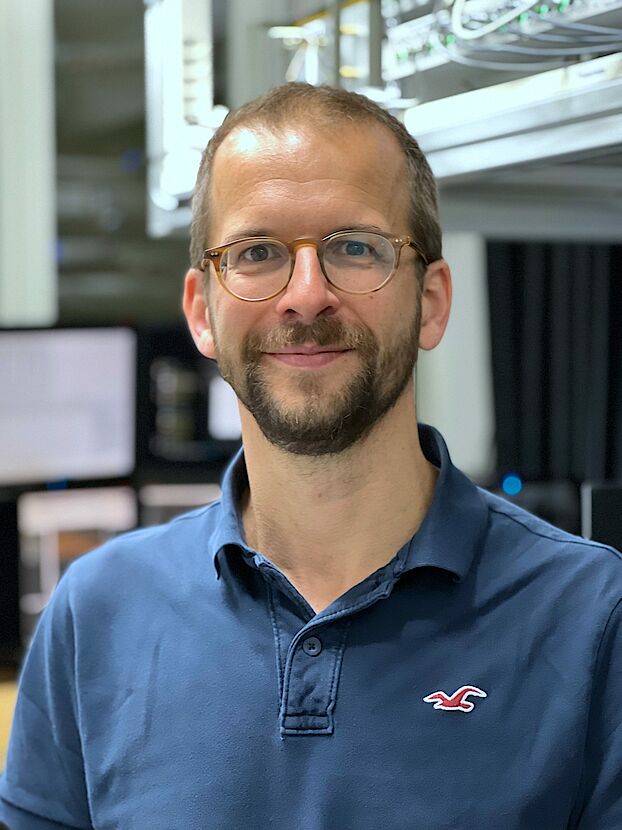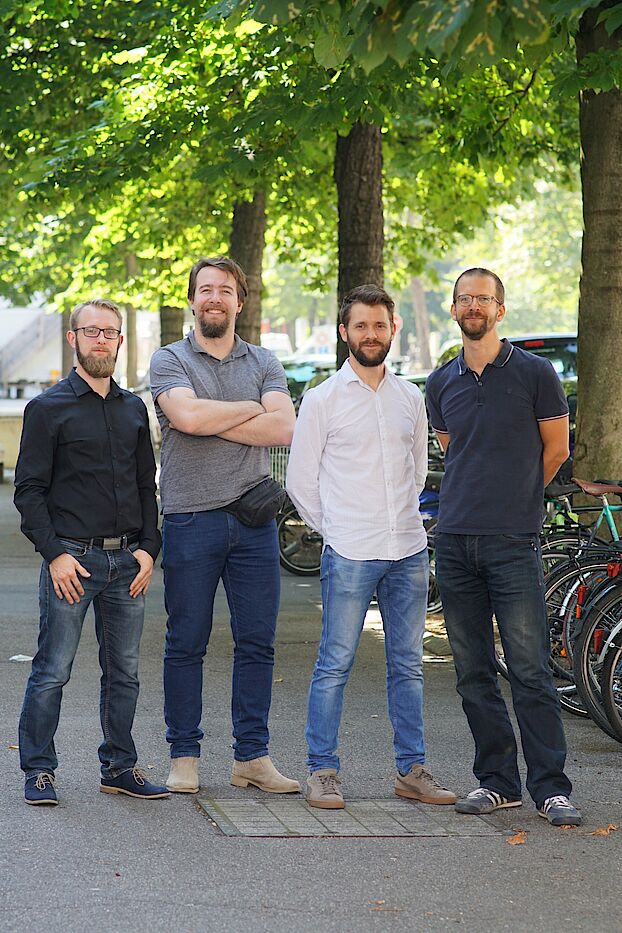/ News, Portraits
An interest in basic and applied research – Patrick Maletinsky becomes new SNI Vice Director
Patrick Maletinsky joined the University of Basel 10 years ago as the Georg H. Endress Foundation Professor of Experimental Physics. When he takes over as vice director of the SNI in August, he will be tasked with supporting and deputizing for the new director, Martino Poggio, as well as being responsible for the SNI’s applied Nano Argovia program on the SNI Board of Directors.
A long relationship with the SNI
Although Patrick Maletinsky is only in his early 40s, he is already seen as one of the “old hands” of the SNI network. His dissertation, which he wrote in Professor Atac Imamoglu’s group at ETH Zurich, was funded by the forerunner institution to the SNI, the National Centre of Competence in Research (NCCR) Nanoscale Science. For this work, Maletinsky used optical techniques to study nuclear spins in quantum dots and their interactions with electrons.
Although he is originally from the Canton of Aargau, he then turned his back on nano research in Switzerland for three years and instead travelled to Harvard University in Cambridge, USA, where he undertook a postdoc in Professor Amir Yacoby’s group. There, he began researching tiny sensors that use quantum mechanical effects and are based on defect centers in diamonds.
The researchers working on this project utilize the spin of individual electrons orbiting within the defect centers. This spin is sensitive to magnetic and electric fields in its environment, and its response can be detected using various measurement techniques in order to derive information about the fields. When the sensors are then combined with scanning probe microscopes, they allow researchers to scan the surface of a sample in precise detail.
Ten years in Basel
When Patrick Maletinsky arrived at the Department of Physics in Basel as Georg H. Endress Assistant Professor in 2012, his aim was to set up an innovative research group that continued this line of research, developing quantum sensors that could be used to study extremely small magnetic fields in nanoscale resolution.
He has now succeeded in his goal and supervises an excellent team of 16 researchers, who develop technology that has become established in various areas that depend on the detailed analysis of magnetic fields.
“It took us about five years to develop the technology to the point where we could use it to study a range of nanomaterials,” explains Patrick. “For example, our technology is the only way of visualizing the extremely weak magnetism of antiferromagnetic materials and two-dimensional magnetic systems on the nanoscale.”
In 2019, he received an ERC Consolidator Grant from the European Research Council (ERC) for research into two-dimensional magnets. This project involves studying atomically thin magnetic systems with a view to achieving a better fundamental understanding of these materials and using them for applications in spintronics. With his new QuantERA international collaboration project SensExtreme, Patrick Maletinsky is currently seeking to establish the applications of his quantum sensors under extreme conditions such as ultrahigh pressures and ultracold temperatures, where they could provide unique insights into exotic new materials.
Founding Qnami: a key milestone
The technology developed at Maletinsky’s Quantum Sensing Lab is not only of great importance to him and his research group. Around the world, other researchers and companies are also keen to study and visualize magnets on the nanoscale using quantum sensors. With this in mind, Patrick teamed up with the former Basel postdoc Mathieu Munsch to found the start-up “Qnami” over five years ago.
Qnami has developed a quantum platform for magnetic material analysis in nanometer resolution and marketed this technology in the form of ProteusQ, the first complete quantum microscope system to utilize diamond defect centers. For example, the device allows users in the semiconductor industry to localize and analyze flaws in integrated circuits in nanoscale detail.
Although Patrick was also involved in operational activities in the company’s early days, the Qnami team now includes specialists in various fields, and Patrick’s involvement centers around consultancy. “On the one hand, I’m available to help with customer inquiries about applications. On the other hand, I also advise the Qnami team when it comes to expanding the technical portfolio and making new contacts,” he says.
He explains that this combination of a majority of time spent on academic research along with a manageable involvement in Qnami is an optimum balance. For him, both aspects of his work are a source of motivation: getting to the bottom of things and carrying out independent research, on the one hand, and applying results and keeping customers happy, on the other.
Corroboration of research
Patrick’s future role in the Nano Argovia program fits in perfectly with this balance and also offers an exciting new challenge. “Applied research can potentially serve as a corroboration of basic research,” he says. “So far, I’ve seen this important aspect of the SNI’s work more from the outside and via the Nano-Tech Apéros. Now, I’m looking forward to getting more involved, meeting new companies and expanding my network.”
Valuable resource
Access to an interdisciplinary network is one of the things that Patrick particularly values about the SNI. “I’ve been an SNI member since the beginning, as I’ve always been able to supervise at least one PhD School project. The events associated with SNI membership have made it easier and more straightforward for me to network with colleagues not only from the University of Basel but also from the University of Applied Sciences Northwestern Switzerland and the Paul Scherrer Institute.”
Patrick also praises the services of the Nano Imaging Lab, which he has made greater use of in recent years in particular, as well as the excellently trained nano students: “The students are a valuable resource for my group, and the people who’ve done projects, master’s theses and doctoral dissertations with me have always been hugely talented.”
Once he is better acquainted with the subject matter, Maletinsky wants to develop specific ideas to further strengthen the position of the SNI. From his existing standpoint as a member and principal investigator, he sees the SNI as being well positioned, efficient, transparent and well managed. Over the coming months, he will familiarize himself with his new responsibilities and get to grips with the SNI from a different perspective after many years of membership.
Further information:
Quantum Sensing Lab
https://quantum-sensing.physik.unibas.ch/en/
Report in SNI update 2012
https://bit.ly/3NSHFBB
Qnami
https://qnami.ch/


